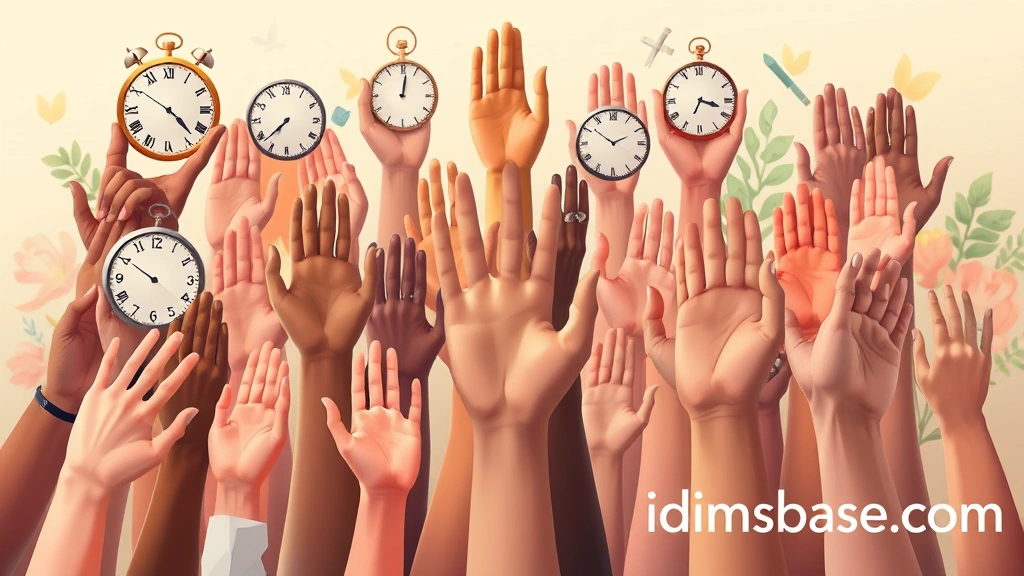Have you ever stopped to think about how incredible our hands are? They're not just for holding things or gesturing; they're powerful symbols! From the delicate touch of a feather to the firm grip of a handshake, hands tell stories, express emotions, and even shape our world. But what if we could describe them in ways that truly capture their essence, going beyond the literal? That's where metaphors come in!
Metaphors are like magic wands for language, allowing us to paint vivid pictures and connect ideas in surprising ways. They help us see familiar things, like our hands, in a completely new light. Ready to dive into a world where hands are more than just body parts? Let's explore 38 fantastic metaphors that will make you look at your own hands, and the hands of others, with fresh eyes!
Why Metaphors for Hands Matter
Using metaphors for hands isn't just about sounding poetic. It's about adding depth and color to your writing and conversations. Imagine describing a sculptor's "hands of a magician" instead of just "skilled hands." See the difference? Metaphors make your language richer, more engaging, and incredibly memorable. They allow you to convey complex ideas or feelings in a concise and impactful way.
38 Metaphors for Hands
Let's get those creative gears turning! Here are 38 wonderful metaphors for hands, each offering a unique perspective:
- Hands of a sculptor: Capable of shaping and creating beauty from raw materials.
- Hands of a magician: Performing incredible feats, seemingly out of thin air.
- Hands of a clock: Moving with precision and marking the passage of time.
- Hands of a painter: Bringing vibrant colors and scenes to life on a canvas.
- Hands of a conductor: Guiding and harmonizing a complex symphony.
- Hands of a surgeon: Delicate, precise, and life-saving.
- Hands of a warrior: Strong, capable, and ready for battle or defense.
- Hands of a gardener: Nurturing life and coaxing growth from the earth.
- Hands of a storyteller: Expressive, emphasizing points, and drawing you into a narrative.
- Hands of a chef: Crafting delicious meals with skill and passion.
- Hands of a spider: Agile, weaving intricate designs.
- Hands of a rock: Unyielding, strong, and steadfast.
- Hands of a feather: Light, gentle, and delicate.
- Hands of a river: Flowing, adaptable, and ever-changing.
- Hands of a compass: Guiding direction and finding true north.
- Hands of a machine: Efficient, tireless, and precise in repetitive tasks.
- Hands of a beacon: Guiding light, offering hope or direction.
- Hands of a child: Innocent, curious, and full of wonder.
- Hands of an elder: Weathered, wise, and full of stories.
- Hands of a net: Catching, gathering, and holding things together.
- Hands of a key: Unlocking possibilities and opening doors.
- Hands of a bridge: Connecting, linking, and providing passage.
- Hands of a fortress: Protecting, defending, and providing security.
- Hands of a canvas: Ready to be marked, skilled, or shaped by experience.
- Hands of a magnet: Drawing things together, attracting.
- Hands of a whisper: Gentle, subtle, and conveying secrets.
- Hands of a storm: Powerful, disruptive, and capable of great force.
- Hands of a dove: Peaceful, gentle, and symbolic of hope.
- Hands of a thief: Stealthy, quick, and taking what's not theirs.
- Hands of a puppeteer: Controlling, manipulating, and pulling the strings.
- Hands of a shield: Protecting, defending, and warding off danger.
- Hands of a mirror: Reflecting, showing, and revealing.
- Hands of a book: Holding knowledge, turning pages, and telling tales.
- Hands of a dancer: Expressive, graceful, and moving with rhythm.
- Hands of a blacksmith: Strong, shaping metal with heat and force.
- Hands of a healer: Soothing, comforting, and bringing relief.
- Hands of a web: Connecting, intricate, and trapping.
- Hands of a craftsman: Skilled, precise, and building with purpose.
How to Use These Metaphors Effectively

Using metaphors effectively is an art! Think about the specific quality or action you want to highlight. Is it strength? Delicacy? Precision? Choose the metaphor that best amplifies that characteristic. Don't just pick one at random; consider the context and the emotion you want to evoke.
For example, if you're describing a delicate surgical procedure, "hands of a surgeon" or "hands of a feather" might fit perfectly. If you're talking about someone's unwavering support, "hands of a rock" or "hands of a fortress" would be strong choices.
Key Takeaways
- Metaphors transform ordinary descriptions into vivid, memorable imagery.
- Hands are incredibly versatile symbols, representing action, creation, emotion, and connection.
- Choosing the right metaphor enhances your communication, making it more engaging and impactful.
- Practice using these metaphors to enrich your everyday language and writing.

Frequently Asked Questions
What is a metaphor?
A metaphor is a figure of speech that directly compares two unlike things without using "like" or "as." It states that one thing is another, creating a strong, imaginative connection. For example, "Her hands were a fortress against the cold."
How do metaphors differ from similes?

Similes also compare two unlike things, but they explicitly use "like" or "as." For example, "Her hands felt like ice." Metaphors make a direct assertion: "Her hands were ice."
Can I create my own metaphors for hands?
Absolutely! The best metaphors often come from your own unique observations and creativity. Think about what your hands remind you of, what they do, or how they feel, and then try to connect those ideas to something seemingly unrelated. What qualities do you want to highlight?
Why are metaphors important in writing?
Metaphors add depth, imagery, and emotional resonance to writing. They help readers visualize concepts, understand complex ideas more easily, and engage with the text on a deeper level. They make writing more interesting and memorable.
Are there any common pitfalls when using metaphors?
Yes, a few! Avoid mixing metaphors (e.g., "His hands were a rock and also a flowing river" – unless that's your intended meaning!). Also, ensure your metaphor makes sense in the context and isn't too obscure for your audience to understand. The goal is clarity and impact, not confusion.
Conclusion
Our hands are truly remarkable, aren't they? By using these 38 metaphors, you now have a fantastic toolkit to describe them in ways that are imaginative, powerful, and truly captivating. So go ahead, experiment with these phrases, and watch how your language comes alive! What's your favorite metaphor for hands? How will you use these new ideas in your next conversation or piece of writing? We can't wait to see what you create!






